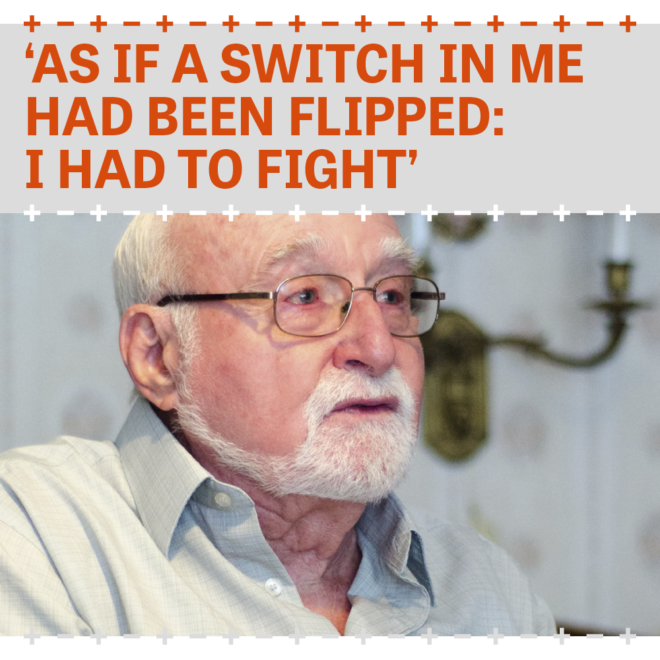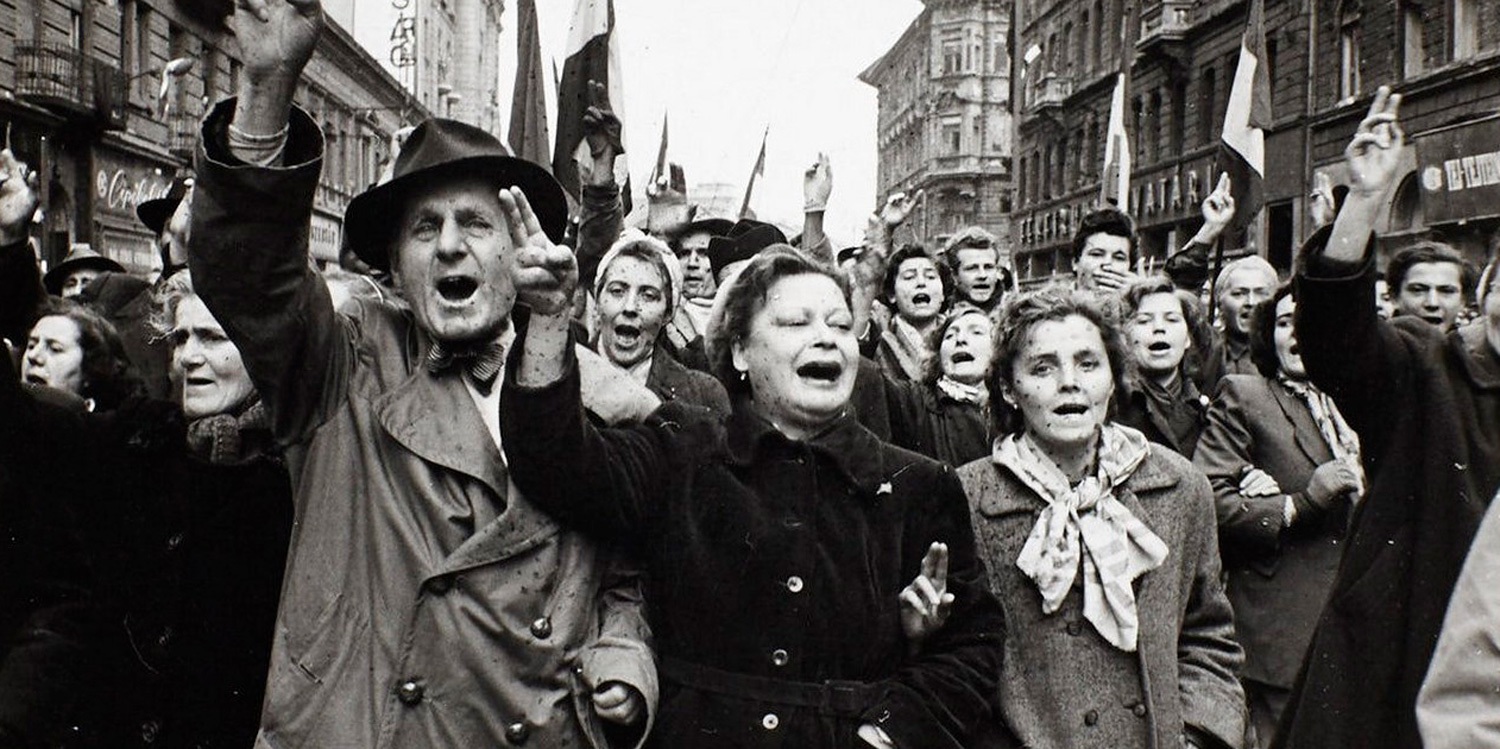László Baranyi (1926), Hungary, October 23, 1956
“I climbed a railing to get a better view: I saw the statue of Stalin being pulled down. ‘Woooooooo’ it sounded from thousands of mouths at the same time. It felt like a volcanic eruption.
“All my colleagues were excited; everyone wanted to do something. But my mother had warned me. I was 29, I had fought in World War II. I had saved lives, I had been in mortal danger – I had had my fair share, she said. Besides, I had just got married. She wanted me to leave the revolution to the young people. I complied. I didn’t participate.
“The next day I heard tanks in the distance – it had to be the Americans coming to liberate Hungary. It seemed clear to me that the protesters were winning. I couldn’t wait to reach the city centre.
“But as I got closer, I heard sounds I knew from the war: crying, screeching. Kossuth square was strewn with bodies and there was blood everywhere. Frantically, I started to carry the wounded to ambulances. When I left the square, hours later, something had changed inside me, as if a switch had been flipped. I was completely determined: I had to join the rebels. I wandered through the streets, presenting myself to strangers: I knew how to use a gun, so where should I sign up?
“At the resistance paper The Truth, they gave me a shot of liquor. It calmed me down. They gave me a weapon. For days, I didn’t have to use it; the Soviet troops retreated. However, rebels were imprisoned at the headquarters of the Communist Party. The crowd asked for their release. Some of the rebels wanted revenge, and they shot at the Party building. I told them I didn’t agree with that. We wanted new rules: no vigilante justice, no mutiny, the revolution had to stay ‘clean’. But suddenly the soldiers from the Party building opened fire on the crowd. That was the moment I picked up my gun and started fighting.
“Despite everything, the days after the fight there was a lot of joy because we believed a new era had come. The only thing we had to do was wait for the Western forces.
“And then the Soviet troops invaded. We distributed newspapers, trying to keep hope alive. In anticipation, we listened to Radio Free Europe. There they told us how to make Molotov cocktails. I cried when I heard that, because I realised: nobody is going to come and help us. We are lost.”
the Hungarian Revolution of 1956
What started as a student protest, on 23 October 1956 in Budapest, grew into a massive uprising against the communist regime. Protesters were carrying the Hungarian flag with a hole in it: they had ripped out the communist emblem. Citizens set up resistance groups and fought against the Hungarian secret service ÁVH and the Soviet troops. It looked as if the revolution was successful. Moscow ordered the Soviet troops to withdraw, and the reformist Imre Nagy took charge. On 1 November, he announced that Hungary would pull back from the Warsaw Pact. On 4 November, however, Russian tanks drove into Budapest and shattered the revolution. Nearly 200.000 Hungarians fled the country.

